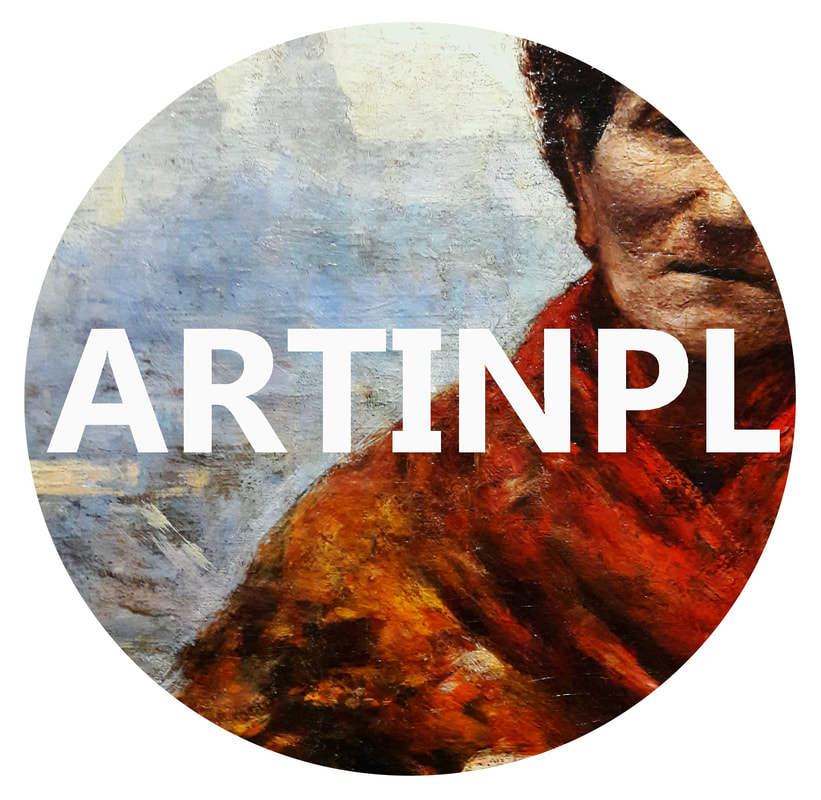|
In 1530, the nine-year-old Sigismund Augustus, son of Sigismund I the Old and his second wife Bona Sforza was crowned as co-ruler of Poland-Lithuania alongside his father. That same year he was also engaged with his four-year-old cousin Elizabeth of Austria, daughter of Anna Jagellonica, Queen of Germany, Bohemia, and Hungary. On 5 May 1543 then 16-year-old Elizabeth married 22-year-old Sigismund Augustus. The king, who already had several mistresses, did not find Elizabeth attractive and continued to have extramarital affairs.
In the course of the year 1545, on June 15th, the young queen Elizabeth died of an epileptic seizure in Vilnius. Her body filled with lime was awaiting the king's arrival from Kraków on July 24, over one month after her death. On August 25, 1545 the body of Elizabeth was buried in Saint Casimir Chapel of the Vilnius Cathedral. After half a year, on January 9, 1546, in Kraków, Seweryn Boner, the commissioner of Sigismund Augustus, signed a contract with the sculptor Giovanni Maria Mosca called Padovano, to create a tombstone for Elizabeth. Padovano, born in Padua and summoned to Sigismund I's court in 1529, became the main sculptor in Kraków after the tragic death of Bartolommeo Berrecci, murdered in 1537 by another jealous Italian artist. He created several tombstones for Vilnius Cathedral, including most probably tombstone for Vytautas the Great, commissioned by Bona Sforza. As early as 1546 Padovano undertook, together with Giovanni Cini, to create the tombstone for Elizabeth. Sometime in 1547, in spite of his mother's disapproval, Sigismund Augustus secretly wed his mistress Barbara Radziwill, she died however on 8 May 1551 in Kraków, five months after long battled coronation, of syphilis, cancer or poisoned by Bona. Barbara asked to be buried in Vilnius and her body was transported to Vilnius Cathedral, where she was buried on 23 June next to Sigismund Augustus' first wife. One of her state portraits (a copy in the Royal Castle in Warsaw, inventory R-ZKW-161), which was probaly used as model for the tomb monument, reflects her great love for precious stones and pearls. She was depicted in a traditional wimple of a married woman covered with pearls and gold-diamond brooches, gold-diamond pendant on a gold chain with a large pearl, comparable with famous La Peregrina or the Tudor pearl, and another gold chain with a precious stone cameo with a bust of her husband, most probably created by Jacopo Caraglio, court goldsmith and medallist of Sigismund Augustus. In January 1552, Jan Lutomierski, royal court treasurer, ordered 8 blocks of red "marble" (Adnet limestone) in Salzburg from Rupert Beyr (pro sepulchro Ser. olim Dominae D. Reginae Barbarae marmores octo iuxta ...), together with one block for the monument of Bishop Samuel Maciejowski in the Wawel Cathedral. The marble was transported to Kraków, from where, after preliminary processing, the blocks were floated down the Vistula to Gdańsk and Königsberg, then up the Nemunas and Neris rivers to the capital of the Grand Duchy of Lithuania covering a total of over 1,500 km. On June 24, 1552 the tomb monument of Queen Elizabeth, created in Kraków, was brought to Vilnius and put in storage in the Franciscan monastery, and on April 18, 1553, Lutomierski signed a contract with Padovano with an advance payment of 280 florins for execution of the monument to Queen Barbara (convenit cum Joanne Maria, Italo lapicida, de labore sepulchri Ser. olim D.D. Barbarae ...). The main sculptural work Padovano performed together with Giovanni Cini on site, in Vilnius. The final bill of 971 florins and 13 groszy for the monuments to both queens was issued in 1562 (In sepulchrum et marmores Serenissimarum Elizabethae et Barbarae Reginarum). Similar to Maciejowski's monument, created by Padovano in 1552, the royal tombs in the form of arcosolium (an arched recess), undoubtedly portrayed the deceased queens' in the fashionable "Sansovino pose", referring to the statues of Roman courtesans of the Flavian era, sleeping above the sarcophagus and turned towards the viewer. It was a revival of the Etruscan models, as opposed to the traditional medieval model which saw the deceased lying in a more rigid way and celebrating a dead person, in favor of a new conception exalting the living person. The works inspired later realisations, like monument to Barbara Tarnowska in Tarnów from the 1550s, monument to Elżbieta Zebrzydowska in Kielce, created by Padovano after 1553, monument to Urszula Leżeńska by Jan Michałowicz of Urzędów in Brzeziny, created between 1563-1568 or monument to Barbara Górka by Girolamo Canavesi in Poznań, executed after 1574. In the last years of his reign Sigismund Augustus decided to built in the Vilnius Lower Castle, on the site of the former medieval chapel of St. Anne, destroyed by a fire in 1530, the new church of St. Anne and St. Barbara as a mausoleum for his wives. The coffins of the two queens were to be stored in Vilnius Cathedral, only until the construction of the church would be accomplished, which the monarch expressed in his last will: The testament of His Majesty Sigismund Augustus, who died in Knyszyn on July VIIth of the year from the Nativity of Our Lord MDLXXII (Library of the Kórnik Castle, copy of the Puławy manuscript by Kielisiński) [...] The bodies of deceased Ladies our Spouses, dead in Our Lord, we want them to be from the Chapel of St. Casimir, where they are put in depository, in this church of St. Anne to be transferred and buried there. The body Her Majesty Halska [Elizabeth] on the right side of the Church by the altar on the side of choir in the corner of the Church. And the Queen Her Majesty Barbara also from this side of the choir in the corner of the Church on the left side. [...] For all this benevolence to Her Majesties our Sisters, often mentioned, the Church of St. Anne, aforementioned and begun by us [...] and as it is acceptable according to custom, if we will be buried there, to built a grave on the aforementioned site worthy our state. Also to Queen Her Majesty Halska [Elizabeth] to erect a grave, which is ready at Jop's. Also to Queen Her Majesty Barbara, after moving their bodies, to erect a grave on the above-described places. Sigismund II Augustus died childless on 7 July 1572 in Knyszyn. The Union of Lublin signed on 1 July 1569 created a single state, the Polish-Lithuanian Commonwealth, a republic of nobles with elective monarchy. On 15 December 1575 Sigismund Augustus' sister Anna Jagiellon was elected as co-ruler of the Commonwealth, together with her husband Stephen Báthory. The king's sisters were reluctant to fullfill his last will concerning the burial of his wives. It is probably due to Bona Sforza's animosity with both wives of her son, that Anna, who was very active in religious foundations (in 1578 she established at Warsaw's Bernardine Church of Saint Anne the St. Anne's Brotherhood), and supervised the construction of tomb monuments for herself, her brother, husband and mother, also not accomplished the delivery of this deed. Anna Jagiellon promote her niece Anna Vasa or her nephew Sigismund Vasa, children of her beloved sister Catherine, Queen of Sweden as candidates the the Commonwealth's throne after her death. Sigismund was elected the monarch of the Commonwealth in 1587 and in 1592 he succeeded his father as the King of Sweden, hence creating one of the largest federal states of the 16th century Europe, but was deposed in Sweden by his uncle Charles IX in 1599. In July 1655, the grandson of Charles IX, "the Brigand od Europe", as he was called by Stefan Czarniecki, Charles X Gustav of Sweden willing to enlarge the Swedish Empire and taking advantage of the Russian invasion, advanced on the Polish-Lithuanian Commonwealth, thus triggering one of the most devastaing wars in the history of the Central Europe, the so-called Deluge (1655-1660). The Commonwealth was attacked from north, south, east and west. On 8 August 1655 Russian and Cossack forces captured Vilnius. The city was pillaged, burned and the population was massacred. According to the Russian historian Flavian Nikolayevich Dobryansky (1848-1919) "everything that was holy and beautiful inside and outside the city was burned; the rest was destroyed, not only the roofs, but also the tombs" (Old and New Vilna. Third edition of 1904). Just as marble tombstone of Paul Olshanski, Bishop of Vilnius in the Vilnius Cathedral, created by Padovano in 1555, and monument to Lew Sapieha, Great Lithuanian Hetman and his two wives in the Church of St. Michael in Vilnius from the 1620s, wich were damaged during that time, the royal effigies were most probaly also devastated. The unfinished and dilapidated church of St. Anne and St. Barbara was left empty until 1666, when, at the request of the prelate Mikołaj Słupski, the king John II Casimir Vasa, great grandson of Bona Sforza, allowed the architect Jan Salwador to dismantle the building and use the materials and funds obtained from it to repair another badly damaged building, the Vilnius Cathedral. The precious marbles from the royal monuments were probably also reused. Marble tondo of 46.5 cm in diameter from the collection of the Vilnius Univeristy, depicting a woman with long hair in antique costume, which was before the World War I in the Rumyantsev Museum in Moscow, was supposed to come from Elizabeth of Austria's tombstone.
Fragment of marble tomb monument of Elizabeth of Austria (1526-1545), Queen of Poland and Grand Duchess of Lithuania, first wife of Sigismund II Augustus by Giovanni Maria Mosca called Padovano and Giovanni Cini in Kraków, 1546-1552. Hypothetical reconstruction by Marcin Latka ©. All rights reserved.
Fragment of marble tomb monument of Barbara Radziwill (1520/23-1551), Queen of Poland and Grand Duchess of Lithuania, second wife of Sigismund II Augustus by Giovanni Maria Mosca called Padovano and Giovanni Cini in Vilnius, 1553-1562. Hypothetical reconstruction by Marcin Latka ©. All rights reserved.
See more pictures of Last Polish Jagiellons on Pinterest - Artinpl and Artinplhub
|
Artinpl is individual, educational project to share knowledge about works of art nowadays and in the past in Poland.
If you like this project, please support it with any amount so it could develop. © Marcin Latka Categories
All
Archives
April 2023
|




